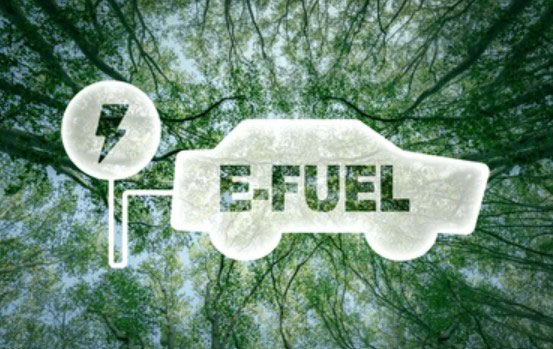John Eichberger |
July 2025
The transportation market continues to evolve for a variety of reasons, including economics, policy and consumer sentiment. There is no confusion that U.S. policy as it relates to the transportation sector and the environment has changed significantly in the first six months of 2025. Congress has voted to repeal EPA’s waiver that granted California the authority to ban combustion vehicle sales in 2035, tax credits for the purchase of electric vehicles will sunset on September 30, 2025, EPA is preparing to reverse its endangerment finding for greenhouse gases, NEVI funds for charging infrastructure have been stopped, federal policy support for domestic fossil fuel production has increased, and trade relations with long-term friends have been thrown into a blender. Meanwhile, key economic indicators for transportation energy have improved for consumers, yet their feelings about the economy and transportation are not very optimistic. For much of this, the overall implications for the transportation market will not be realized for some time, but at the half-way point of 2025 it is worth looking at where the market is so we can better monitor how it develops over the next six months and beyond.
Energy Prices
It is impossible to consider the transportation sector without first considering the price of energy. Because approximately around 98% of vehicles in operation in the U.S. remain powered by internal combustion engines and liquid fuels, we will focus our attention in this article on gasoline and diesel prices.
The impact of gasoline prices extends beyond the analytical. In TEI’s “Consumer Survey: 2025 Driver Behaviors and Perspectives,” we found that consumers remain very sensitive to fuel prices, even though prices had declined significantly when we fielded the survey. We found that 70% of consumers still ranked price as the most important factor when buying gasoline. We also found that gas prices had a great impact on 31% of consumers’ feelings about the economy in general. But pricing trends seem to be heading in consumers’ favor so far in 2025.


Second quarter 2025 crude oil prices, which currently comprise half of the retail price of gasoline according to the U.S. Energy Information Administration (EIA)1, have come down about 20% from second quarter of 2024. Meanwhile, national average retail gasoline and diesel prices have also come down 11% and 9%, respectively.
1 https://www.eia.gov/petroleum/gasdiesel/gaspump_hist.php


However, national averages do not really reflect what consumers are experiencing in their own markets. The following charts break down the average price of regular gasoline and diesel fuel by PADD2 (Petroleum Administration for Defense Districts) and, because it is often an outlier, California. In these charts, it is clear that retail prices have come down in every district but that consumers are not paying the same everywhere.
2 https://www.eia.gov/todayinenergy/detail.php?id=4890


Vehicle Prices
While fuel prices are critical to understanding the affordability of transportation, the price of vehicles is another key indicator in how transportation affects consumer budgets and how it may change over time. The purchase of a vehicle is often the second largest expense a person will make, behind the purchase of a home, and it has a significant impact on their financials. There are nearly 300 million vehicles in operation in the United States and transitioning to more efficient or alternative fuel vehicles will be dependent upon the ability of consumers to afford a new vehicle.
The following charts show the average retail price of new and used vehicles from 2024 to 2025. As a frame of reference, in 2023 the median household income in the U.S. was $80,6103. The data presented below shows that the average price of new vehicles was up $1,500 in June 2025 to $47,527. Meanwhile, the average price of used vehicles was up $800 to $28,067. At the same time, interest rates have increased as have monthly payments. According to a presentation at TEI’25 by Cox Automotive, interest rates in May 2025 for new vehicles were above 9% and for used vehicles were above 14%. The combined impact on consumers of higher prices and interest rates resulted in average monthly payments for new vehicles of $787 per month and $575 for used, which is equal to almost 10% of household income.
3 https://www.census.gov/library/publications/2024/demo/p60-282.html


With the economy where it is and the price of vehicles being so high, it is not surprising that half of consumers believe now is a bad time to buy or lease a vehicle. In addition, 64% think that prices will go up next year and, consequently, only 39% say they were somewhat likely to acquire a new vehicle in the next two years.



Vehicle Sales
Given the pessimism consumers expressed about the current and future vehicle market, it will be very interesting to see how vehicle sales perform in the next six months and beyond. That said, it is worth taking a look at vehicle sales during the first half of 2025. While this data does not necessarily reflect the long-term implications of recent policy changes and might not reflect current consumer attitudes, it serves as a benchmark against which to compare the past few years and future sales data.
One important point to note regarding the impact of policy changes is that things will take time to be seen in the market. The TEI Board has convened several times this year and reaffirmed consistently that the market will adjust slowly and vehicle production strategies, while they may be tweaked slightly in the short term, are unlikely to be discarded entirely due to changing policy priorities in the U.S., which has exhibited extreme policy volatility in the past 12 years. It is essential to realize that the transportation sector is global and that vehicle manufacturers must comply with requirements and expectations in a variety of countries and political jurisdictions. Consequently, it would be illogical to assume that changes in policy during the first six months of 2025 would have affected sales immediately, and the data supports that hypothesis.
Looking at vehicle sales by powertrain through the first six months of 2025 compared with the same period in 2024, overall light duty vehicle sales were up 3.8%. This is a positive sign for the market in general, although the input of consumers in our recent survey may work against that trajectory. During this period, internal combustion engine vehicle (ICEV) sales were down slightly by 0.75% while hybrid electric vehicles (HEV) were up 41.3% and battery electric vehicles (BEV) were up 9.8%. Plug in hybrid electric vehicles (PHEV) were the only group that was down, dropping 11.2%.
In terms of market share of the LDV market, these values shifted a bit with ICEV sales losing nearly 4% and HEVs picking up more than 3% to hit a segment high of 12.4% share of all sales. BEVs, meanwhile, did slightly expand their share during the first six months compared to 2024 to 7.2%, although they continued their market share slide that began following Q3 2024 when they accounted for 8.8% of sales. With the federal tax credit expiring at the end of September, many expect to see BEV sales spike during the third quarter and then fall significantly in the fourth, but we will have to wait to see how that plays out.


Taking a longer-term look at the vehicle powertrain market, going back two full years (eight quarters) overall LDV sales were up 5.5% compared with Q3 2023. ICEV sales were up 0.8% and HEVs were up 67.0%, while BEVs slid 6.1% and PHEVs decreased 4.2%. Some might claim that this data indicates the end of the golden age for electrics, but we disagree. BEVs, despite the attention they have attracted, remain a new technology and should be expected to have ups and downs as they gain their foothold. The really remarkable trend is the growth in HEVs, which deserves to be watched closely going forward as more automakers dedicate resources to these efficient powertrains.


Conclusion
The first six months of vehicle sales in 2025 seem to reflect a consistent trend with prior quarters, but this consistency may be short lived given consumer sentiment and policy shifts. The drop in oil and fuel prices has been seen in the past to influence consumer vehicle purchase decisions. When prices are low, alternative vehicle sales have stalled or declined while they increase when pump prices are high. Should prices remain low, it could result in a shift of vehicle sales back to traditional ICE powertrains, especially in the absence of government incentives. That said, consumers who are more strongly attracted to electric vehicles may not be as influenced by fuel price volatility and rank-and-file consumers. The appeal of BEVs for the passionate buyers extends far beyond the price of energy and those appealing elements – performance, range, technology, emissions, charge-at-home – are only improving with new vehicle introductions.
TEI will continue to monitor market developments in both energy and vehicle sectors, seeking indications of long-term influence over the trajectory of the market. But we are currently in a very interesting situation in the market – how the economy, policy and technology will influence the future will be a fascinating study that we are excited to pursue over time.





